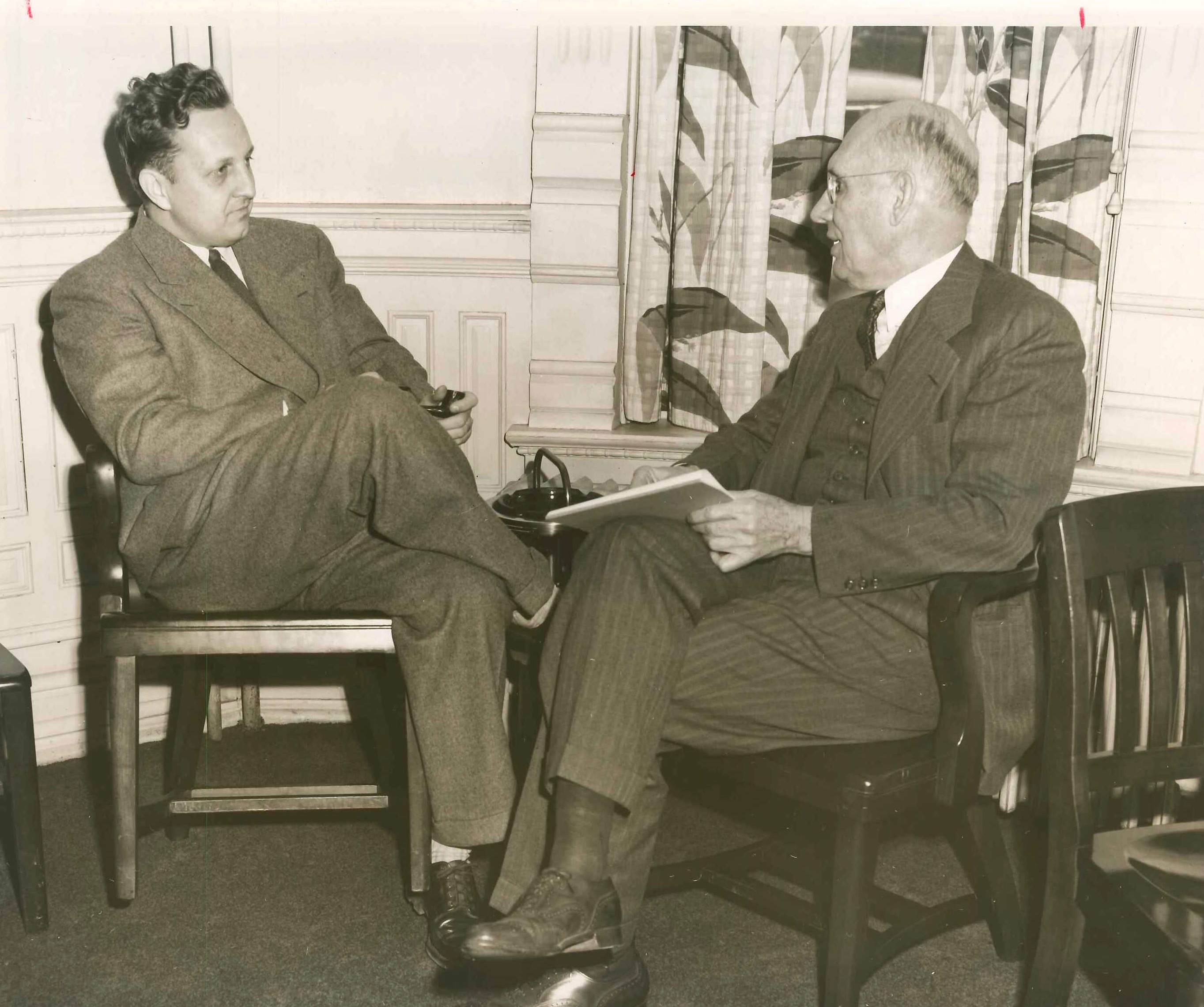Charles Kettering, the genius engineer behind many of General Motors’ breakthrough innovations, racked up 186 patents and earned a reputation as a great inventor in his day.

He also became a high-profile supporter of Southern Research in its early days, thanks to a relationship with the new research organization’s chairman, Thomas Martin.
Though the dynamic founder of Southern Research and the inventor of the automobile starter motor had exchanged letters since 1934, they didn’t actually meet until both attended a nutrition conference in New York in 1945. Martin told Kettering about the work getting under way in Birmingham.
Intrigued, Kettering contributed advice, expertise and funding to help accelerate growth at Southern Research, particularly the cancer program headed by Howard Skipper, Ph.D.
“I do remember very well that a lot of the early money when I joined Skipper’s group came from Kettering, and it was pretty soon after that we also got money from the Alfred P. Sloan Foundation,” recalled John Montgomery, Ph.D., a key member of Southern Research cancer team from 1952 until 1990.
“Sloan was the money man at General Motors when Ket was the inventor, and they tossed some money in the pot, too. And so we had enough money to begin to do something,” Montgomery added.
In 1945, around the time that Southern Research was launching its first projects, Kettering joined his GM colleague to open the Sloan-Kettering Institute for Cancer Research (SKI) in New York. SKI’s director was Cornelius Rhoads, who had served with Skipper in the Army’s chemical warfare section during World War II.

These connections would drive growth in Skipper’s labs.
‘BOSS KET’ COMES TO TOWN
Kettering made frequent visits to check on Southern Research’s progress. The first came on Nov. 12, 1947, dedication day for the organization’s first new building – Laboratory No. 5.
At the time, Southern Research had about 50 scientists, working on early projects such as heat pump technology, extending food uses of peanuts, new paints from coal by-products, and chemical detectors for the Army. Kettering talked to the scientists, toured the facilities, and spoke that night at the Chairman’s Dinner.

“Set up your laboratories, equip them,” he told the researchers. “You cannot tell what is going to come out of them now, or 10 or 15 years hence. Your achievements will be different from what you now think, but they will be wonderful.”
He was keenly interested in Skipper’s cancer program, which was started the year before thanks to a $25,000 gift from Mobile businessman Ben May.
“One of my favorite memories is of Boss Kettering, as we called him, and his visits to our group,” Montgomery recalled in an oral history of Southern Research published in 1991. “He came to see us three or four times a year, to talk to the boys and see how things were getting along on cancer research.”
He did more than just offer encouragement to Southern Research’s scientists. He made possible the organization’s first permanent labs for biomedical research — the Kettering-Meyer Laboratory.
The Charles F. Kettering Foundation contributed $200,000, and Birmingham’s Robert Meyer Foundation donated $100,000 for the lab. Kettering attended the groundbreaking on June 26, 1953, and Sloan was on hand to turn the first shovel.
Significantly, Sloan agreed to provide substantial funding to advance the cancer work being done at Southern Research under partnership with SKI.
Just five years later, K-M Laboratory II opened on Southern Research’s campus, a project spurred by the cancer program’s rapid growth.
Kettering was among Southern Research’s many important early benefactors. Besides May and the Meyer family, these include Robert I. Ingalls, Harry Frueauff Jr., Daniel Construction Co. and the Daniel Foundation.
This is Part Four of a series looking at the history of Southern Research.